So You Bought a New Bike?
Advice for new riders once they've bought a bicycle
First thing's first: if you just bought a new bike you should ride it. If the bike isn't missing anything and more or less fits you, I don't recommend making any changes until you've gotten a sense of how it feels riding it the way it is. Even if you're sure you want to change this, that, and the other thing I think it's good advice to ride it the way it is just to make sure your changes are really necessary. I strongly recommend going for a ride of 10 miles or more. I find many parts (saddles in particular) can feel great for 2-3 miles only to become excrutiating a little while later. Secondly, once you've given it the initial ride you should make some adjustments to make sure the bike fits you as well as possible. Even a bike that isn't your ideal size  can be adjusted to fit you comfortably. My preferred size is 54cm but I happily ride bikes ranging from 51cm to 58cm that are set up in very different ways to fit me right. It's substantially cheaper and easier to make adjustments to a few components than to buy new parts or a whole new bike. Once you've given the bike a ride, made some adjustments to the fit, and rode it once more for good measure you may need to change a few things to maximize performance and comfort. There are lots of resources to help you pick out a new bike on the internet. I wrote this post for new riders who already picked out their bike but want to know how to get the most out of it. Below are some suggestions based on my experience.
can be adjusted to fit you comfortably. My preferred size is 54cm but I happily ride bikes ranging from 51cm to 58cm that are set up in very different ways to fit me right. It's substantially cheaper and easier to make adjustments to a few components than to buy new parts or a whole new bike. Once you've given the bike a ride, made some adjustments to the fit, and rode it once more for good measure you may need to change a few things to maximize performance and comfort. There are lots of resources to help you pick out a new bike on the internet. I wrote this post for new riders who already picked out their bike but want to know how to get the most out of it. Below are some suggestions based on my experience.
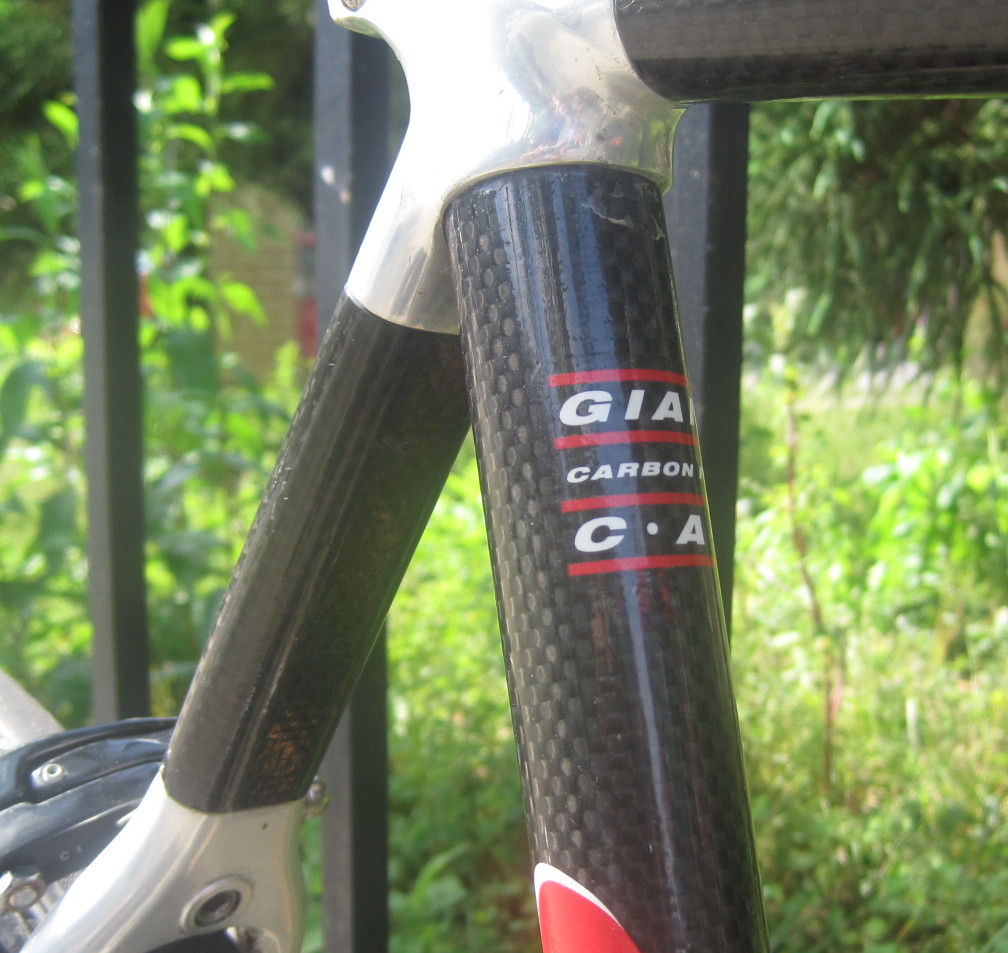 A quick note about weight. In cycling, it is often said: strong, light, cheap, pick two. In general, lighter components and ostensibly a lighter bike is faster. A faster bike can be more fun to ride because you can ride it faster but also because you can ride further with the same amount of effort (not to mention who wants to carry a 30lb bike up four flights of stairs?). In bike frames and components, weight is always a consideration for manufacturers so while not everything ligher is necessarily better, often the better components are lighter. That said, a bike that is uncomfortable is no fun to ride no matter how light and fast it is so there is always a trade off between weight and comfort. I bring this up because you'll see weight brought up as a factor in most reviews of bike gear and it's worth noting its significance.
A quick note about weight. In cycling, it is often said: strong, light, cheap, pick two. In general, lighter components and ostensibly a lighter bike is faster. A faster bike can be more fun to ride because you can ride it faster but also because you can ride further with the same amount of effort (not to mention who wants to carry a 30lb bike up four flights of stairs?). In bike frames and components, weight is always a consideration for manufacturers so while not everything ligher is necessarily better, often the better components are lighter. That said, a bike that is uncomfortable is no fun to ride no matter how light and fast it is so there is always a trade off between weight and comfort. I bring this up because you'll see weight brought up as a factor in most reviews of bike gear and it's worth noting its significance.
Saddle
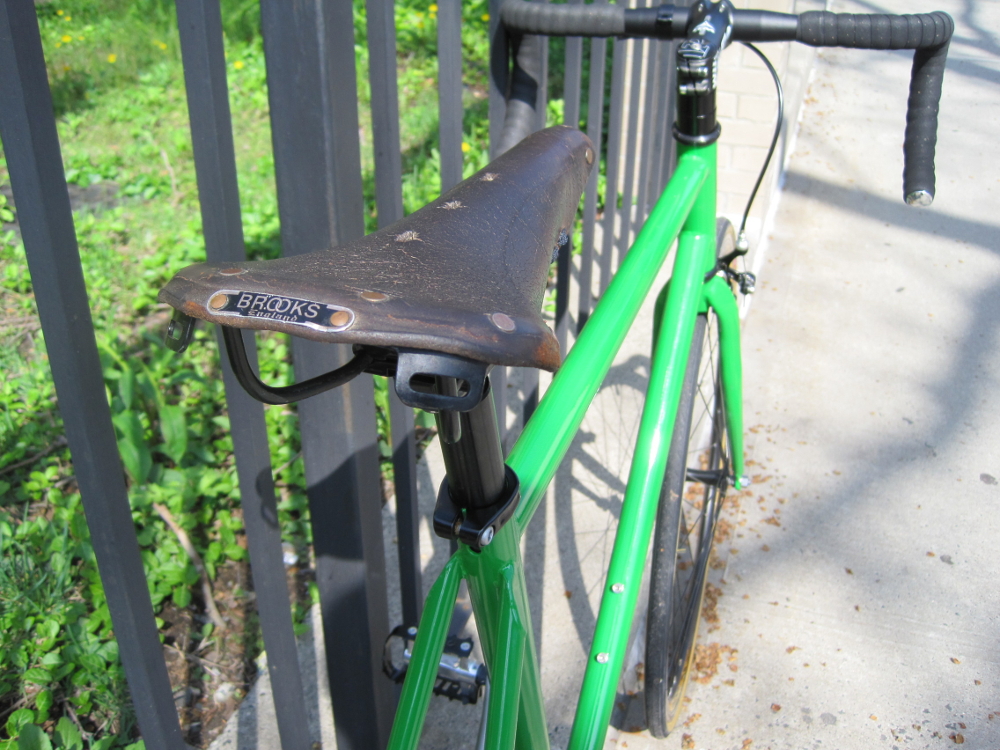 The saddle (not "seat") is perhaps the first thing you may notice that you want to change on your bike. What makes a comfortable saddle varies widely between people (whose anatomy and pain tolerance also varies widely). No matter what anyone says there is no one-size-fits-all solution to which saddle you should use. Most new bikes are sold with very simple cheap saddles. Even a $2000+ bike often comes with something basic because bike manufacturers expect you to either not care or replace it with the saddle of your choice. A common mistake is to choose the softest saddle because it seems like it will hurt the least. Just like the softest mattress isn't the most comfortable for everyone, the softest saddle isn't always best. A rider sits on a saddle primarily with their sit bones and a super soft saddle can cause material to push up between the sit bones and cause discomfort to both men and women. My personal preference is to ride thick leather saddles (Brooks has been the leader in these but others including Velo Orange and Selle Anatomica also make these).
The saddle (not "seat") is perhaps the first thing you may notice that you want to change on your bike. What makes a comfortable saddle varies widely between people (whose anatomy and pain tolerance also varies widely). No matter what anyone says there is no one-size-fits-all solution to which saddle you should use. Most new bikes are sold with very simple cheap saddles. Even a $2000+ bike often comes with something basic because bike manufacturers expect you to either not care or replace it with the saddle of your choice. A common mistake is to choose the softest saddle because it seems like it will hurt the least. Just like the softest mattress isn't the most comfortable for everyone, the softest saddle isn't always best. A rider sits on a saddle primarily with their sit bones and a super soft saddle can cause material to push up between the sit bones and cause discomfort to both men and women. My personal preference is to ride thick leather saddles (Brooks has been the leader in these but others including Velo Orange and Selle Anatomica also make these). 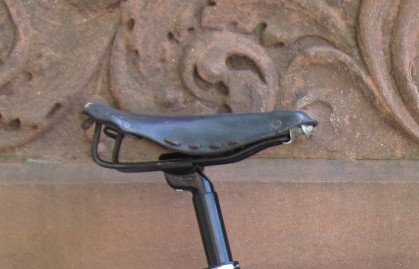 These saddles start out really firm and require a breaking in period like any quality pair of boots but I've always found them more comfortable in the long run than synthetic saddles though they often weigh a lot more. If you ride in padded shorts, the surface is less important. You may opt for something lighter or consider a saddle with springs which can help make the ride more comfortable by absorbing shock. Ulitimately what you choose will be a very personal choice based on your body and riding style. It can take a few tries to find the right saddle but you'll keep riding it for a long time once you do.
These saddles start out really firm and require a breaking in period like any quality pair of boots but I've always found them more comfortable in the long run than synthetic saddles though they often weigh a lot more. If you ride in padded shorts, the surface is less important. You may opt for something lighter or consider a saddle with springs which can help make the ride more comfortable by absorbing shock. Ulitimately what you choose will be a very personal choice based on your body and riding style. It can take a few tries to find the right saddle but you'll keep riding it for a long time once you do.
Pedals
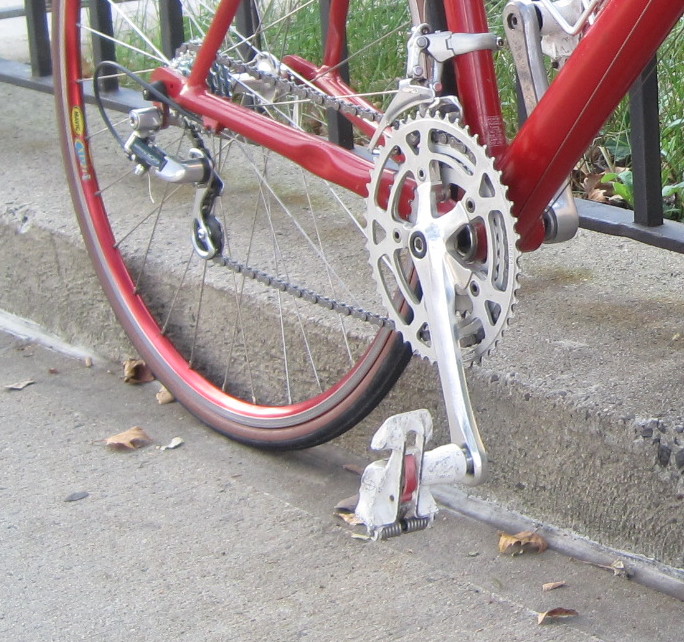 While many new bikes are sold with basic no-frills saddles, many new bikes come with no pedals at all (as a result, many published bike weights exclude pedals entirely). This is, again, because pedals are a personal choice that should match the shoes you will be riding in. Caged or platform pedals are the basic flat pedals you see on most bikes. They are a good choice to start if you don't want to buy cycling shoes right away. Many caged pedals will have holes in them to allow for toe clips. Toe clips and straps are what racers wore before clip-in pedals and shoes came on the market. They help hold your foot in place which can help keep your shoe from sliding off the pedal and allow you to pull in addition to pushing the pedals, increasing power. The downside of toe clips is they are frustrating to get your foot into before you get used to them. The clip and strap side is heavier so their default is to face downward. Riding on the other side of the clip/strap can cause the clips to rub the ground as you ride. You have to kick the bottom of the pedal to get your foot into it properly but this becomes fairly natural as you get used to it. Clip-in shoes (confusingly called "clipless" because there is no clip holding the strap) come in a variety of types but require special shoes with a cleat at the bottom. The two major types are "road" style pedals where the cleat protrudes from the front of the shoe and "mountain" style pedals where the cleat is recessed. The mountain style has the benefit of making it easier to walk on pavement though I find that road pedals hold shoes better.
While many new bikes are sold with basic no-frills saddles, many new bikes come with no pedals at all (as a result, many published bike weights exclude pedals entirely). This is, again, because pedals are a personal choice that should match the shoes you will be riding in. Caged or platform pedals are the basic flat pedals you see on most bikes. They are a good choice to start if you don't want to buy cycling shoes right away. Many caged pedals will have holes in them to allow for toe clips. Toe clips and straps are what racers wore before clip-in pedals and shoes came on the market. They help hold your foot in place which can help keep your shoe from sliding off the pedal and allow you to pull in addition to pushing the pedals, increasing power. The downside of toe clips is they are frustrating to get your foot into before you get used to them. The clip and strap side is heavier so their default is to face downward. Riding on the other side of the clip/strap can cause the clips to rub the ground as you ride. You have to kick the bottom of the pedal to get your foot into it properly but this becomes fairly natural as you get used to it. Clip-in shoes (confusingly called "clipless" because there is no clip holding the strap) come in a variety of types but require special shoes with a cleat at the bottom. The two major types are "road" style pedals where the cleat protrudes from the front of the shoe and "mountain" style pedals where the cleat is recessed. The mountain style has the benefit of making it easier to walk on pavement though I find that road pedals hold shoes better.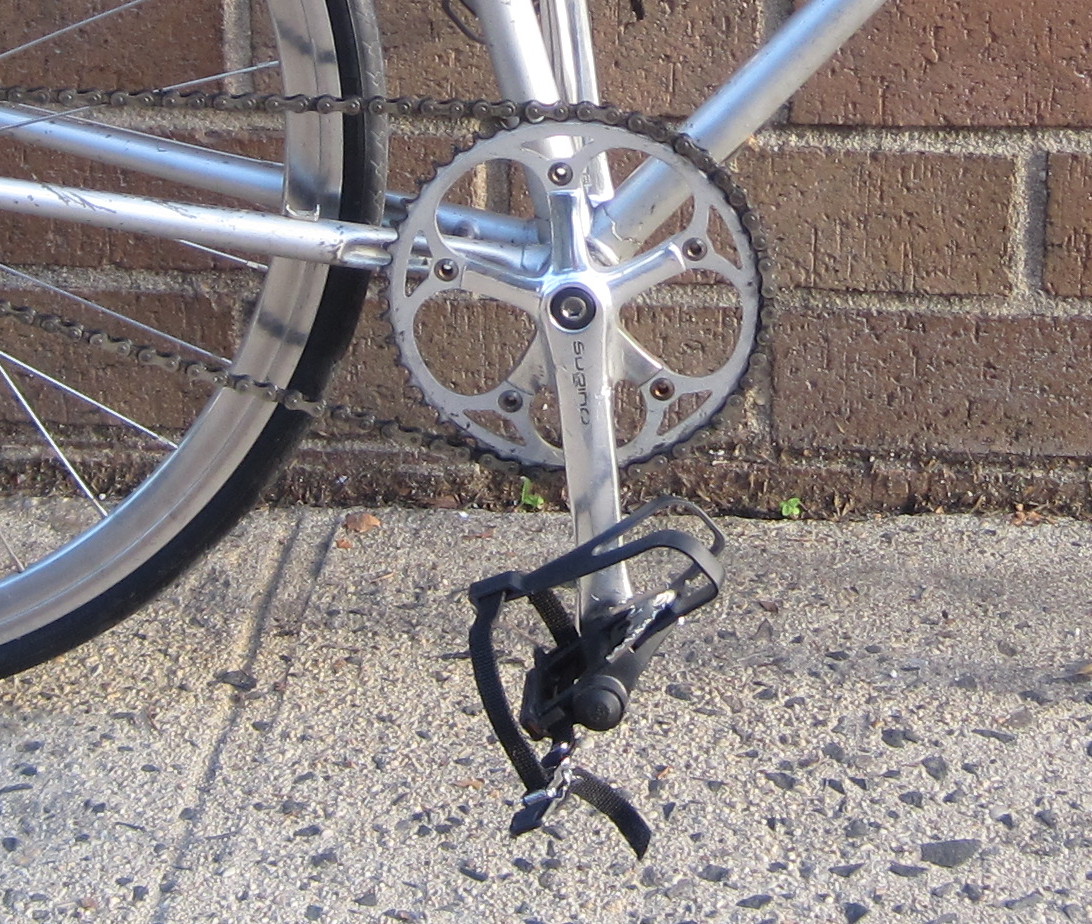 The bottoms of road shoes are smooth plastic as are the cleats and I find them slippery to walk in while mountain shoes often have rubber soles with good traction. Both types are pretty stiff in the sole to transfer power better so they're not ideal everyday walking shoes. I would only recommend road-style shoes to racers and riders who don't do much walking when they ride (or carry an extra set of shoes to change into). Road style clipless pedals are not terrible to ride on in regular shoes if you had to and mountain style (Shimano SPD) are often sold 1-sided with a flat side or double sided with an option to add a removable plastic platform to one side. This allows riding comfortably in regular shoes when you don't want to wear cycling shoes.
The bottoms of road shoes are smooth plastic as are the cleats and I find them slippery to walk in while mountain shoes often have rubber soles with good traction. Both types are pretty stiff in the sole to transfer power better so they're not ideal everyday walking shoes. I would only recommend road-style shoes to racers and riders who don't do much walking when they ride (or carry an extra set of shoes to change into). Road style clipless pedals are not terrible to ride on in regular shoes if you had to and mountain style (Shimano SPD) are often sold 1-sided with a flat side or double sided with an option to add a removable plastic platform to one side. This allows riding comfortably in regular shoes when you don't want to wear cycling shoes.
Tires
 Tires are one of the parts on your bike you will eventually have to replace. I find most people replace tires before they've truly worn out. A tire needs to be replaced when it's worn down low enough to see the stitching poking through the rubber. However, there are other reasons to change your tires. If you get lots of flats, you may opt for a tire with thicker tread and flat protection. Usually this means a tire with a kevlar belt inside it that protects the structure of the tire. Another consideration is the tire size. A tire has 2 dimensions: the bead diameter and the thickness. You can only replace your tire with one of the same bead diameter but you can choose from a wide variety of thicknesses. While there are some considerations for the width of your rim, in practice I've not had problems fitting any tire with the correct bead diameter on any rim. The bead diameter is always printed on your tire as a 3-digit number (700c for example is 622, 26" MTN is 559, etc.) and this number is much more important than nominal measurements such as 26" (there are at least 3 dramatically differently size 26" wheels on the road today). A fatter tire can be slower due to the added weight but is more comfortable because it contains more air to absorb the road's bumps. I like using 28-37mm tires on my bikes because the streets of NYC have many potholes.
Tires are one of the parts on your bike you will eventually have to replace. I find most people replace tires before they've truly worn out. A tire needs to be replaced when it's worn down low enough to see the stitching poking through the rubber. However, there are other reasons to change your tires. If you get lots of flats, you may opt for a tire with thicker tread and flat protection. Usually this means a tire with a kevlar belt inside it that protects the structure of the tire. Another consideration is the tire size. A tire has 2 dimensions: the bead diameter and the thickness. You can only replace your tire with one of the same bead diameter but you can choose from a wide variety of thicknesses. While there are some considerations for the width of your rim, in practice I've not had problems fitting any tire with the correct bead diameter on any rim. The bead diameter is always printed on your tire as a 3-digit number (700c for example is 622, 26" MTN is 559, etc.) and this number is much more important than nominal measurements such as 26" (there are at least 3 dramatically differently size 26" wheels on the road today). A fatter tire can be slower due to the added weight but is more comfortable because it contains more air to absorb the road's bumps. I like using 28-37mm tires on my bikes because the streets of NYC have many potholes. 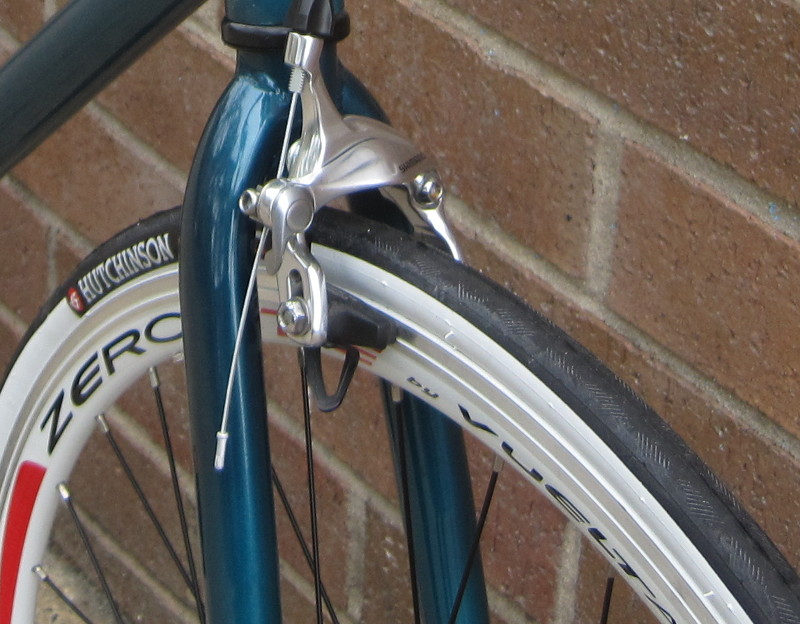 If the roads where you live are better taken care of you can be equally comfortable using 23-25mm tires. If you go off road you may want fatter tires (40mm+ or 1.9"+ in MTB sizes) but I haven't had problems on trails with 25-28cm tires while fat tires feel sluggish on pavement where I do most of my riding. Knobby tires are helpful on really loose ground but I have not found them to have a benefit on most surfaces. Lastly, skinny tires in the 20-25mm range require higher pressures (100+ PSI in most cases) and more frequent pumping than fatter tires. I highly recommend a floor pump with a pressure gauge to properly inflate tires of all sizes.
If the roads where you live are better taken care of you can be equally comfortable using 23-25mm tires. If you go off road you may want fatter tires (40mm+ or 1.9"+ in MTB sizes) but I haven't had problems on trails with 25-28cm tires while fat tires feel sluggish on pavement where I do most of my riding. Knobby tires are helpful on really loose ground but I have not found them to have a benefit on most surfaces. Lastly, skinny tires in the 20-25mm range require higher pressures (100+ PSI in most cases) and more frequent pumping than fatter tires. I highly recommend a floor pump with a pressure gauge to properly inflate tires of all sizes.
Brakes
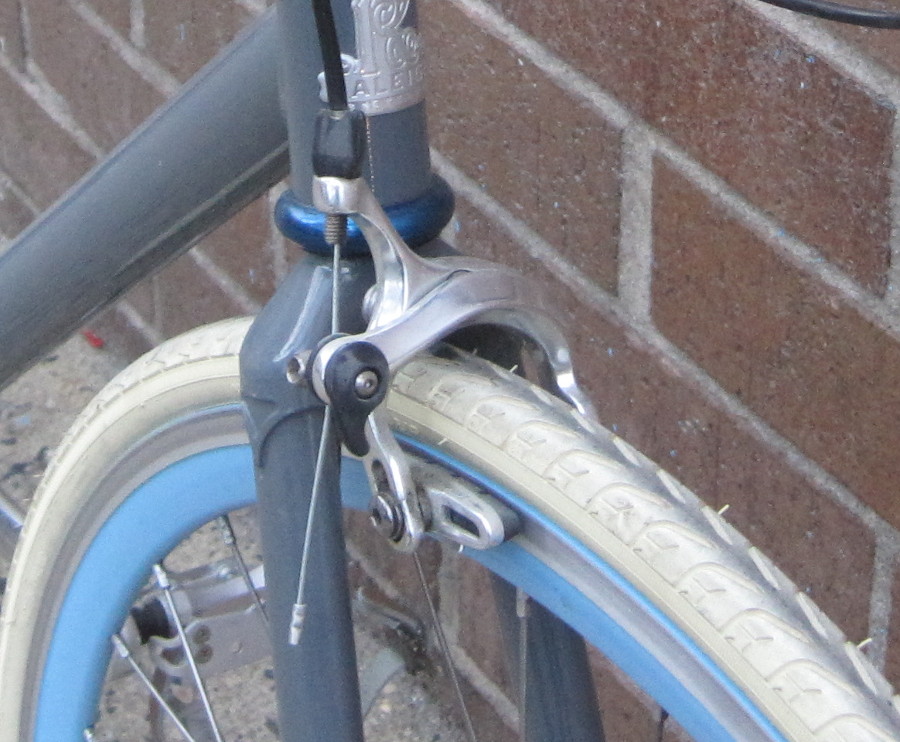 Most bikes won't have a problem with braking out of the store even if it is used. If you feel like you're not getting enough braking power, however, you may try changing your brake shoes. New brakes can be expensive but the brake shoes are substantially cheaper and easier to replace. Many caliper and cantilever brakes come with shoes where the rubber part is replaceable.
Most bikes won't have a problem with braking out of the store even if it is used. If you feel like you're not getting enough braking power, however, you may try changing your brake shoes. New brakes can be expensive but the brake shoes are substantially cheaper and easier to replace. Many caliper and cantilever brakes come with shoes where the rubber part is replaceable. 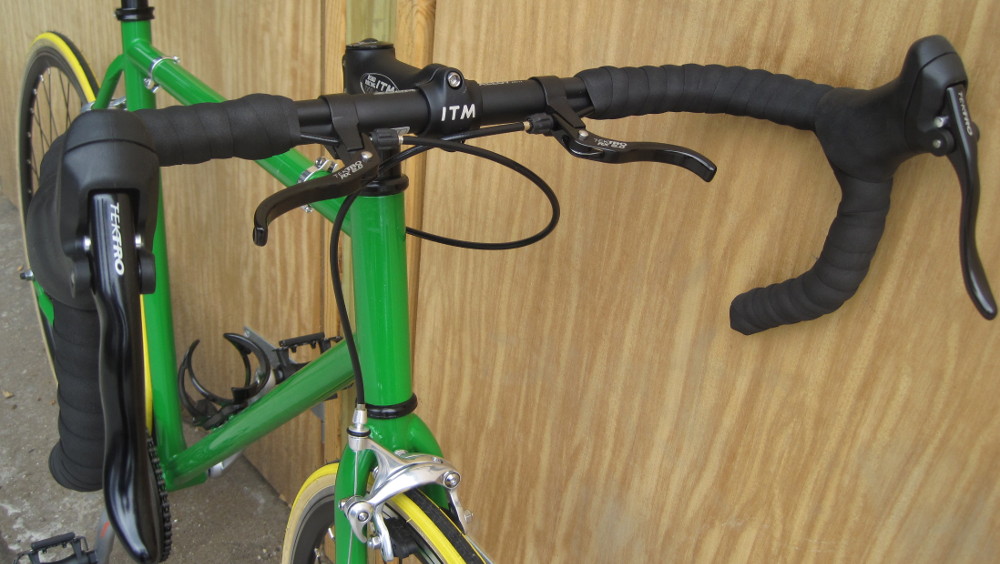 You can replace these with higher quality pads such as Kool Stops. If your bike came with drop bars and you feel like you want an extra set of levers, you can add interrupter levers to your bars. They are typically not very expensive and you usually won't have to change your brake cables or handlebar tape to attach them. The housing just needs to be cut in the right spot and the lever is added in line.
You can replace these with higher quality pads such as Kool Stops. If your bike came with drop bars and you feel like you want an extra set of levers, you can add interrupter levers to your bars. They are typically not very expensive and you usually won't have to change your brake cables or handlebar tape to attach them. The housing just needs to be cut in the right spot and the lever is added in line.
Other Considerations
Racks
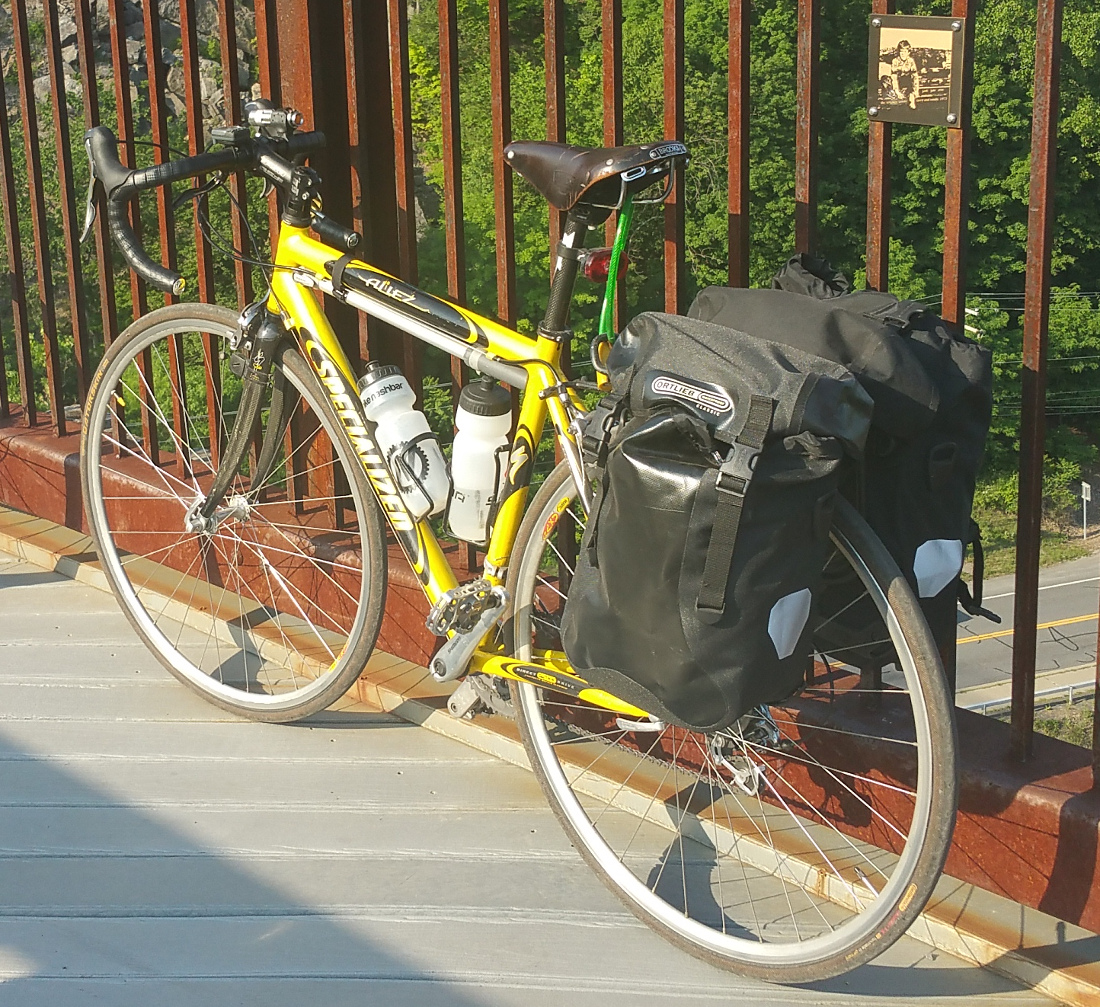 If you're thinking of going on longer rides or commuting by bike I recommend you add a rack and panniers (bike bags) to your ride. A front basket is another option but they will negatively affect your ability to steer when weighted down. A rack won't add much weight to your bike and panniers are removable so you won't have to take them on every ride if you don't need them. Panniers allow your bike to carry all your extra gear for you. It makes for a more pleasant ride than being weighed down by a backpack, plus your back stays nice and dry. You should also add bottle cages to your bike if it doesn't already have them and make your bike carry your water as well.
If you're thinking of going on longer rides or commuting by bike I recommend you add a rack and panniers (bike bags) to your ride. A front basket is another option but they will negatively affect your ability to steer when weighted down. A rack won't add much weight to your bike and panniers are removable so you won't have to take them on every ride if you don't need them. Panniers allow your bike to carry all your extra gear for you. It makes for a more pleasant ride than being weighed down by a backpack, plus your back stays nice and dry. You should also add bottle cages to your bike if it doesn't already have them and make your bike carry your water as well.
Gearing
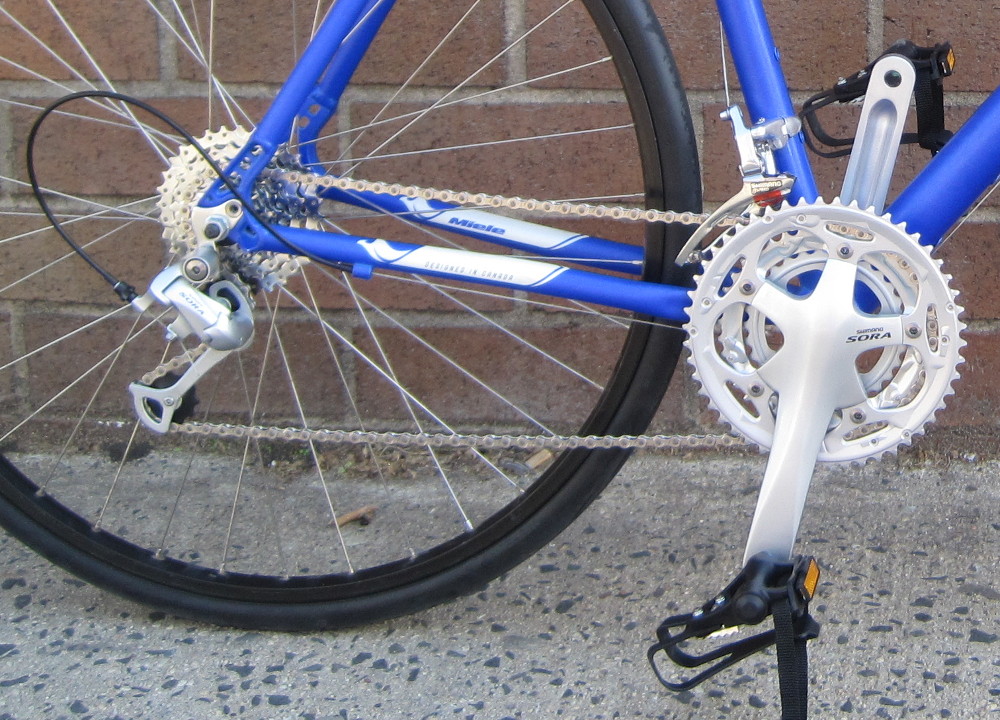 You might find the gearing isn't ideal for the type of riding you are doing. If you often find that you don't have a gear low enough to ride up the hills in your area, you have two options. You can replace your double crankset for a triple (if you already have a triple you can buy smaller rings) or get a wider range with larger cogs in the back. Your rear derailleur may only support a small change in size without having to be replaced as their cages are built with a maximum number of teeth in mind. If you find the jumps are too big between gears and you're always bouncing between two gears, you might choose to do the opposite. You can get a crankset with chainrings that are closer together in size but the better option is to get a cassette or freewheel (your bike will have one or the other) with a tighter range of speeds than what you currently have. You will have to stick with the same actual number of gears in the back unless you want to change out your shifters and potentially other parts as well (this applies primarily to bikes with indexed shifting, if your bike uses friction shifters you can safely add a speed or two to the back without changing your shifters but you'll have to adjust the limit screws on your derailleurs).
You might find the gearing isn't ideal for the type of riding you are doing. If you often find that you don't have a gear low enough to ride up the hills in your area, you have two options. You can replace your double crankset for a triple (if you already have a triple you can buy smaller rings) or get a wider range with larger cogs in the back. Your rear derailleur may only support a small change in size without having to be replaced as their cages are built with a maximum number of teeth in mind. If you find the jumps are too big between gears and you're always bouncing between two gears, you might choose to do the opposite. You can get a crankset with chainrings that are closer together in size but the better option is to get a cassette or freewheel (your bike will have one or the other) with a tighter range of speeds than what you currently have. You will have to stick with the same actual number of gears in the back unless you want to change out your shifters and potentially other parts as well (this applies primarily to bikes with indexed shifting, if your bike uses friction shifters you can safely add a speed or two to the back without changing your shifters but you'll have to adjust the limit screws on your derailleurs).
Fit Adjustments
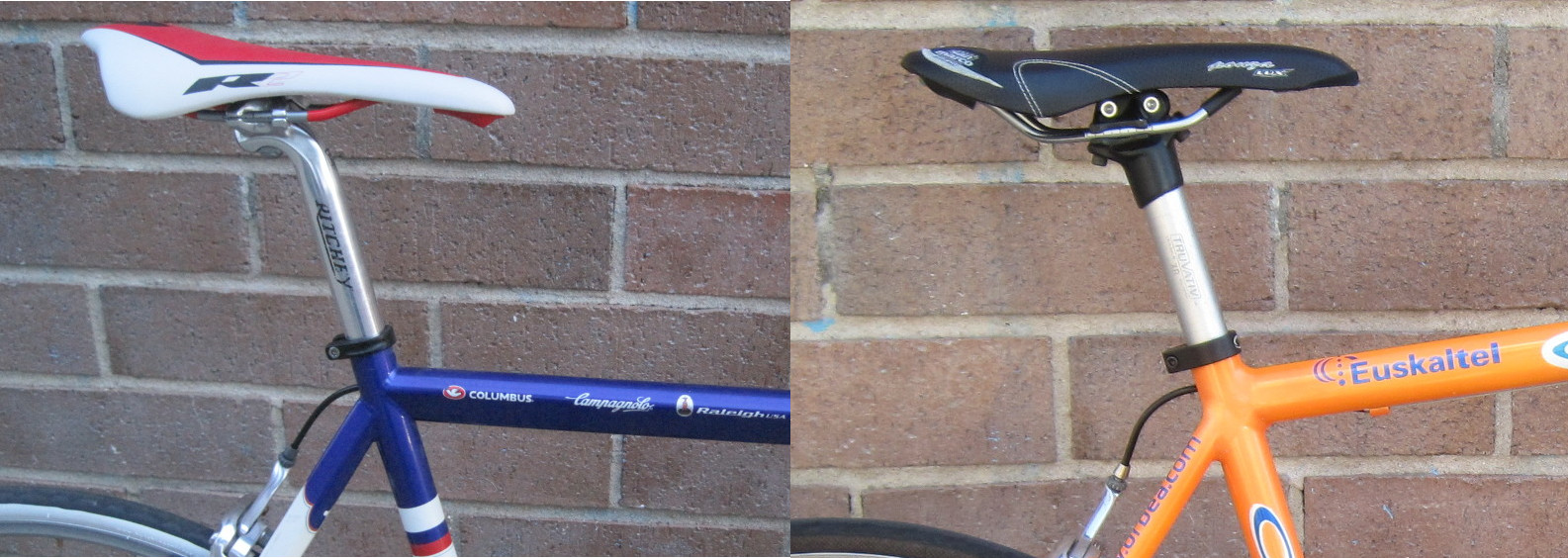 There are a few ways you can swap out components to adjust the way a bike fits you. One way is to replace the seatpost or crankset. When your crank arm is parallel to the ground, your knee should be directly over the pedal spindle. This is to avoid pain and maximize power in your stroke. You can replace a setback seatpost with one with no setback to move your knee forward or vice versa to move it back. This is only necessary if your saddle is all the way forward or back and you need a little more distance. Crank arms come in different lengths which can also help with this problem (though replacing a crankset can be rather expensive).
There are a few ways you can swap out components to adjust the way a bike fits you. One way is to replace the seatpost or crankset. When your crank arm is parallel to the ground, your knee should be directly over the pedal spindle. This is to avoid pain and maximize power in your stroke. You can replace a setback seatpost with one with no setback to move your knee forward or vice versa to move it back. This is only necessary if your saddle is all the way forward or back and you need a little more distance. Crank arms come in different lengths which can also help with this problem (though replacing a crankset can be rather expensive). 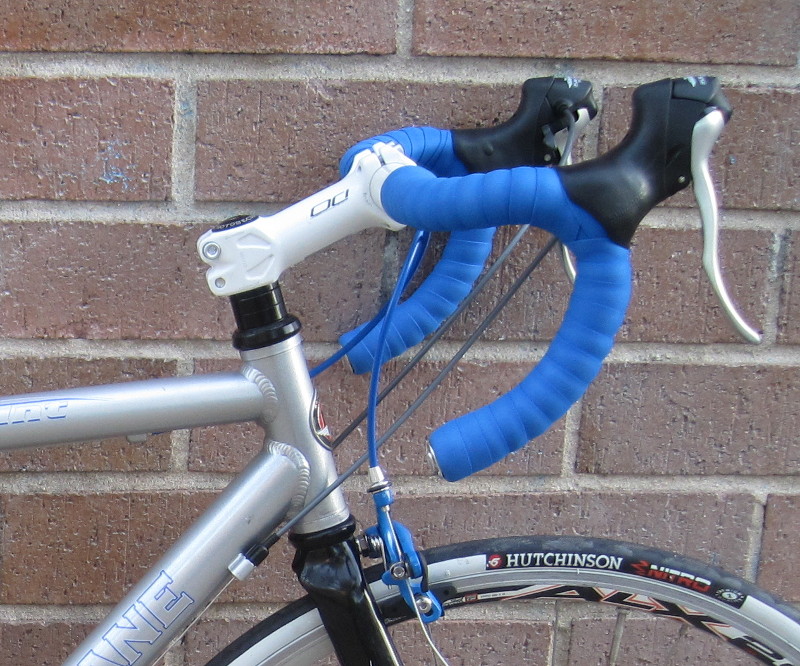 Another adjustment that can be made is in the stem. A shorter stem brings the handlebars closer to you and would help your fit if you find the bike is too long for you or you have shorter arms compared to your torso. Threadless stems can also be installed upside down or replaced with one of the same length but a different angle. This can move the bars up or down relative to where the rider is sitting. Many people find a more upright riding position more comfortable than the standard setup many road bikes comes with. A more downward facing position increases power so you may choose to reverse this adjustment as you ride more.
Another adjustment that can be made is in the stem. A shorter stem brings the handlebars closer to you and would help your fit if you find the bike is too long for you or you have shorter arms compared to your torso. Threadless stems can also be installed upside down or replaced with one of the same length but a different angle. This can move the bars up or down relative to where the rider is sitting. Many people find a more upright riding position more comfortable than the standard setup many road bikes comes with. A more downward facing position increases power so you may choose to reverse this adjustment as you ride more.
Further Reading
Revisionist Theory of Bicycle Sizing - A useful article on bike fit by Sheldon Brown.
6-speed, 7-speed, 8-speed, 9-speed, 10-speed, 11-speed? - An article on speeds and gearing.
Shimano And Campagnolo - Can't We All Get Along? - Mixing Campy and Shimano drivetrains.
Repair Help - Excellent bike repair tutorials from Park Tools.
Loaded Touring Bicycles - On Tour - Gallery of loaded touring bikes.
Happy Riding!